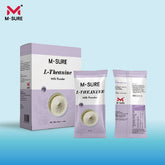Six Core Functions of Dietary Fiber and Their Scientific Mechanisms
by
BiotechAusway
24 Apr 2025
Dietary fiber is more than just a tool for better digestion—its benefits span across multiple body systems, supporting metabolic health, weight control, and even disease prevention. Here's a breakdown of its six core functions and the science behind them.
I. Maintaining Intestinal Health
🌀 Promotes Intestinal Motility
Fiber absorbs water and expands in the digestive tract, increasing stool bulk and stimulating intestinal muscle contractions. This helps boost bowel movement frequency by 30–40%, effectively preventing constipation and hemorrhoids.
-
Insoluble fiber (e.g., cellulose from whole grains) adds stool bulk.
-
Soluble fiber (e.g., oat β-glucan) softens stools.
Together, they create a synergistic effect on bowel health.
🌱 Optimizes Gut Microbiota
Dietary fiber acts as a prebiotic, fermented by beneficial bacteria such as Bifidobacteria, which produce short-chain fatty acids (SCFAs) like butyrate.
-
SCFAs lower gut pH, inhibiting harmful bacteria.
-
Butyrate provides over 60% of the energy needed by intestinal mucosal cells.
II. Metabolic Regulation
💉 Regulates Blood Glucose
Soluble fiber forms a gel-like matrix in the intestines, slowing carbohydrate absorption and reducing blood sugar spikes by 15–25% post-meal.
-
Increasing daily fiber intake by 10 grams may lower type 2 diabetes risk by 20%.
🫀 Supports Cholesterol Clearance
Water-soluble fibers (e.g., pectin, β-glucan) bind to bile acids, increasing their excretion and promoting cholesterol metabolism.
-
5–10 grams/day of soluble fiber can reduce LDL cholesterol by 5–10%, as shown in clinical trials.
III. Weight Management & Disease Prevention
🍽️ Enhances Satiety
Fiber delays gastric emptying by 30–50 minutes and stimulates satiety hormone release, reducing calorie intake by approximately 20%.
This makes it highly effective in obesity prevention strategies.
🧹 Adsorbs Carcinogens & Detoxifies
Insoluble fiber binds with heavy metals, nitrosamines, and other carcinogens, reducing their contact time with the intestinal wall.
-
This can lower colorectal cancer risk by 17–40%.






